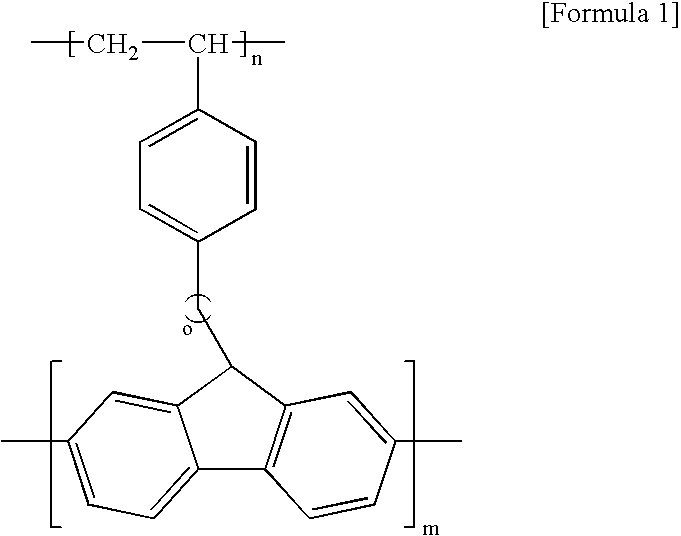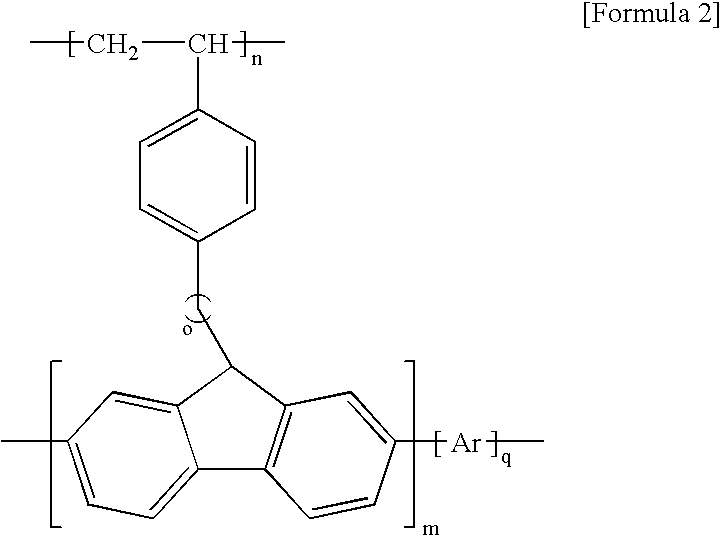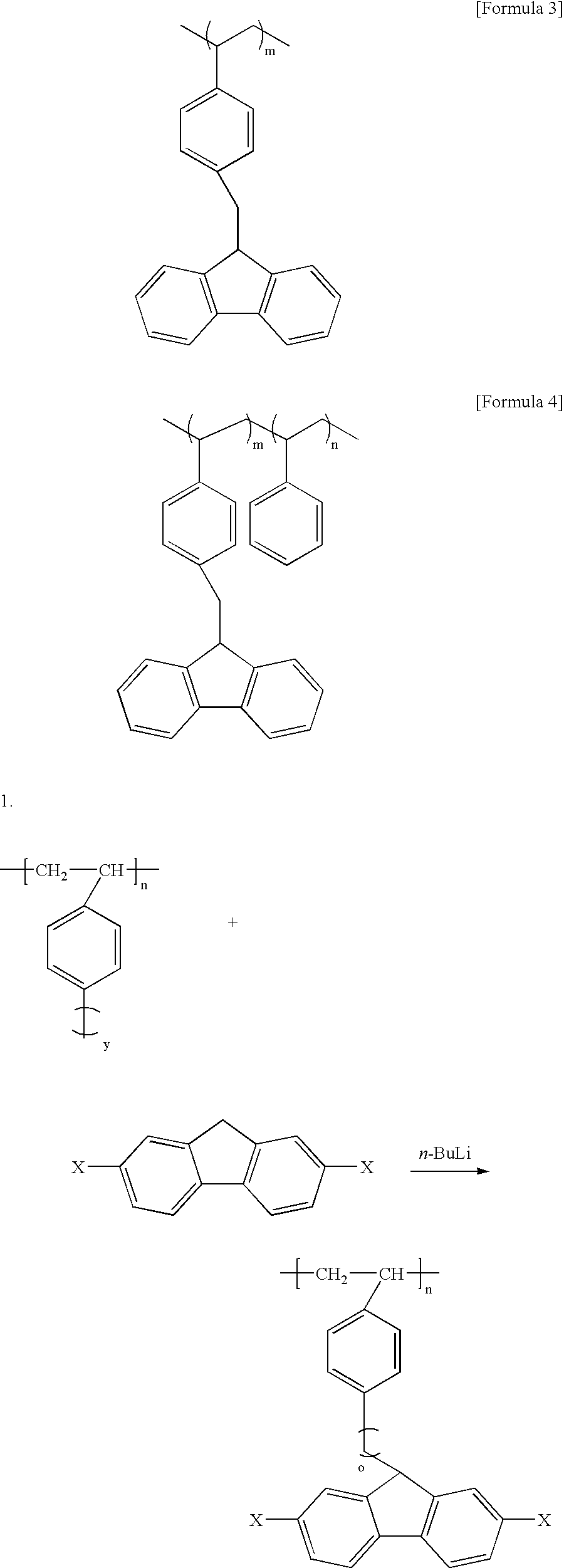Blue light-emitting, ladder-type polymer with excellent heat stability
a ladder-type polymer and blue light-emitting technology, applied in the direction of solid-state devices, chemistry apparatus and processes, and light-emitting compositions, can solve the problems of reducing durability and difficult to have the glass transition temperature above 100.degree.
- Summary
- Abstract
- Description
- Claims
- Application Information
AI Technical Summary
Problems solved by technology
Method used
Image
Examples
example 2
Polyvinylbenzyl dibromofluorene
[0032] Under N.sub.2 atmosphere, polyvinylbenzyl chloride (1.57 g, M.sub.w 55,000) is dissolved in THF (20 mL). Dibromofluorene (3.24 g) was dissolved in THF (50 mL) and cooled to -78.degree. C. To this solution, 4 mL of n-butyl lithium (2.5M, n-hexane solution) was added and the resulting solution was added slwly to the above polyvinyl benzene chloride solution. The mixture was stirred at room temperature for 6 hours and water was added. The product was extracted with ethyl ether (200 mL) and dried under vacuum. Obtained product was yellow solid. M.sub.w: 272,900. MWD: 5.71. UV-Vis (.lambda..sub.max, THF): 298 nm.
example 3
Polyvinylbenzyl fluorene
[0033] Under N.sub.2 atmosphere, Polyvinylbenzyl chloride (1.57 g, M.sub.w 55,000) was dissolved in THF (20 mL). Fluorene (1.67 g) was dissolved in THF (50 mL) and cooled to -78.degree. C. To this solution added was 4 mL of n-butyl lithium (2.5 M, n-hexane solution). The resultant solution was added to the above polyvinyl benzyl chloride solution. The mixture was stirred for 6 hours at room temperature and water was added. The product was extracted with ethyl ether (200 mL) and dried under vacuum. Yellow solid was obtained.
[0034] M.sub.w: 68,160. MWD: 2.96. UV-Vis ((.lambda. max, THF): 302 nm.
example 4
Polyvinylbenzyl-polyfluorene (P1)
[0035] Under N.sub.2 atmosphere, polyvinylbenzyl fluorene (1.57 g, M.sub.w 55,000) and dihexylfluorene (3 g) were dissolved in chloroform (20 mL). To the solution FeCl.sub.3 (5 g) was added and stirred for 4 hours at room temperature. To the mixture methanol was added and the produced precipitates were filtered. The obtained solids were dissolved in THF and the insoluble solids were discarded. The THF solution was dried under vacuum and yellow solid was obtained.
[0036] M.sub.w: 79,040, MWD: 2.94. UV-Vis ((.lambda..sub.max, THF): 362 nm. PL (.lambda..sub.max, THF): 542 nm. TGA(5%, .degree. C.): 475, Glass transition temperature(.degree. C.): 421.8.
PUM
| Property | Measurement | Unit |
|---|---|---|
| glass transition temperature | aaaaa | aaaaa |
| melting temperature | aaaaa | aaaaa |
| temperature | aaaaa | aaaaa |
Abstract
Description
Claims
Application Information
 Login to View More
Login to View More - R&D
- Intellectual Property
- Life Sciences
- Materials
- Tech Scout
- Unparalleled Data Quality
- Higher Quality Content
- 60% Fewer Hallucinations
Browse by: Latest US Patents, China's latest patents, Technical Efficacy Thesaurus, Application Domain, Technology Topic, Popular Technical Reports.
© 2025 PatSnap. All rights reserved.Legal|Privacy policy|Modern Slavery Act Transparency Statement|Sitemap|About US| Contact US: help@patsnap.com



